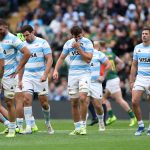Black Friday is woven into the fabric of American culture, although the day and the holiday in general have changed since the turn of the century, it still carries the shopping nostalgia of many consumers. We’re entering a new era in retail, and while it’s yet to be determined how consumers will spend on post-pandemic Black Friday, the comfort and joy of holiday shopping is still lighting up the spirits of many, which could mark a return to the Friday traditions of years past.
Analysts and e-commerce leaders have been predicting a lackluster online holiday shopping season this year because of the weak economy, inflation and more people returning to stores after the COVID-19 pandemic. And a survey shows 63% of U.S. consumers consider Black Friday in-store shopping a tradition.
But this year, according to Adobe Analytics, Black Friday sales topped $9 billion for the first time, with $9.12 billion in online sales. It was followed by Thanksgiving online spending of $5.29 billion, up 2.9% from last year. In-store sales were up 12% year on year, while ecommerce sales were up 14%. Despite decades of inflation, Black Friday physical store visits edged up 2.9% from last year, according to retail analytics provider Sensormatic Solutions. In addition, traffic to brick-and-mortar stores on Thanksgiving Day was up 19.7% over 2021, as more retailers opened on Thursday than last year.
“As we expected, Black Friday sales and in-store experiences attracted shoppers, resulting in a very strong turnout this year,” said Natalie Warb, financial expert from CouponBirds. “The pandemic-driven trend of shopping in unenclosed malls has continued and malls are recovering. Our data shows that consumers continue to enjoy the benefits of physical shopping.”
But the increased traffic doesn’t appear to have significantly increased in-store spending. In-store sales rose just 0.1%. Shopper revenue, which measures spending per consumer, fell 6.8% on Black Friday, according to RetailNext, which noted that shoppers appeared to be returning to stores to browse with “less clear purchase intentions.”
The convenience and simplicity of online transactions will continue to attract consumers to spend online. Much of the growth is now coming from consumers who shop with their phones, with nearly half of all online sales being made via smartphones at 48%, an all-time high for mobile shopping, up from 44% last year. The main drivers of growth are electronics, toys and fitness equipment. There’s no doubt that mobile shopping is easier and faster for shoppers, and for retailers, that means more money per minute. That’s why retailers need to think mobile first when it comes to Black Friday trends for the next few years.
The figures also give an insight into how shoppers are coping with inflation-driven prices and the sharp rise in popularity of “buy now, pay later” schemes. The total number of buy now, pay later orders jumped 78% last week compared with the previous week. Revenue from those orders soared 81% over the same period. Thanksgiving and Black Friday can be good days to shop for a “buy now, pay later” service provider. Given the current financial pressures facing many shoppers, the BNPL payment option provides consumers with a way to still get the goods they want.
On Thanksgiving Day, online BNPL revenue rose 1.3% year on year, while orders rose 0.7%, according to Adobe. More convincingly, some shoppers are using BNPL to buy lower-priced items rather than higher-priced ones. Compared to the previous week, the week of November 19 to November 25 saw a 78% increase in orders using BNPL. In addition, BNPL’s total revenue increased by 81% over the same period. In the short term, it’s a positive sign that consumers are looking to further stretch their wallets and do more.
In-store shopping has been more in the spotlight this year thanks to eased restrictions on COVID-19, but that doesn’t mean the chaos of Black Friday shopping is back. Several analysts noted that traffic was strong and noticeable at various stores, but not the long waiting lines that were notorious for the holidays in the past. The numbers could be a hopeful indicator for retailers in the weeks ahead. Early holiday forecasts have faded, with Target, Macy’s, Nordstrom and other retailers reporting stagnant sales in late October and early November.
The popularity of shopping in unenclosed malls has continued, malls are recovering, and consumers are continuing to enjoy the benefits of physical shopping. And no matter how you feel about the principles and principles of Black Friday, the day will pass. Shoppers will still benefit from good deals and retailers will continue to treat it as the most important day of the year.
The post <strong>Consumption Data Report on Black Friday in 2022</strong> appeared first on Vanguard News.





